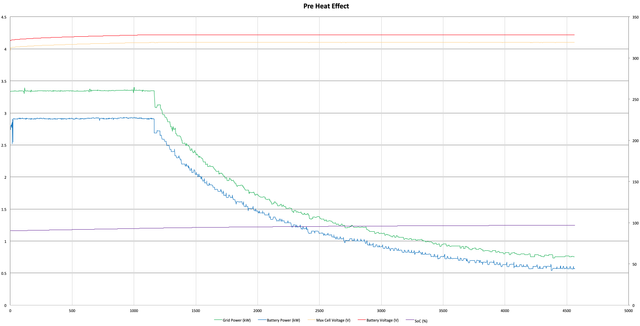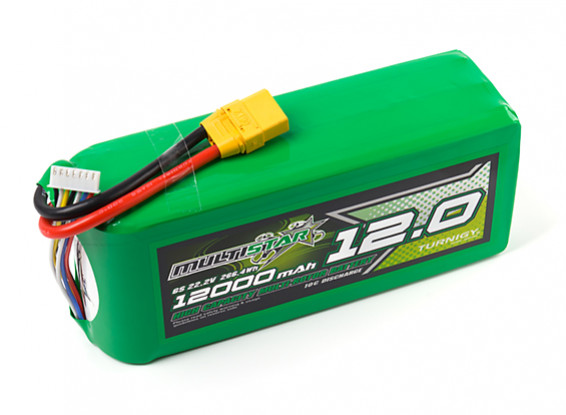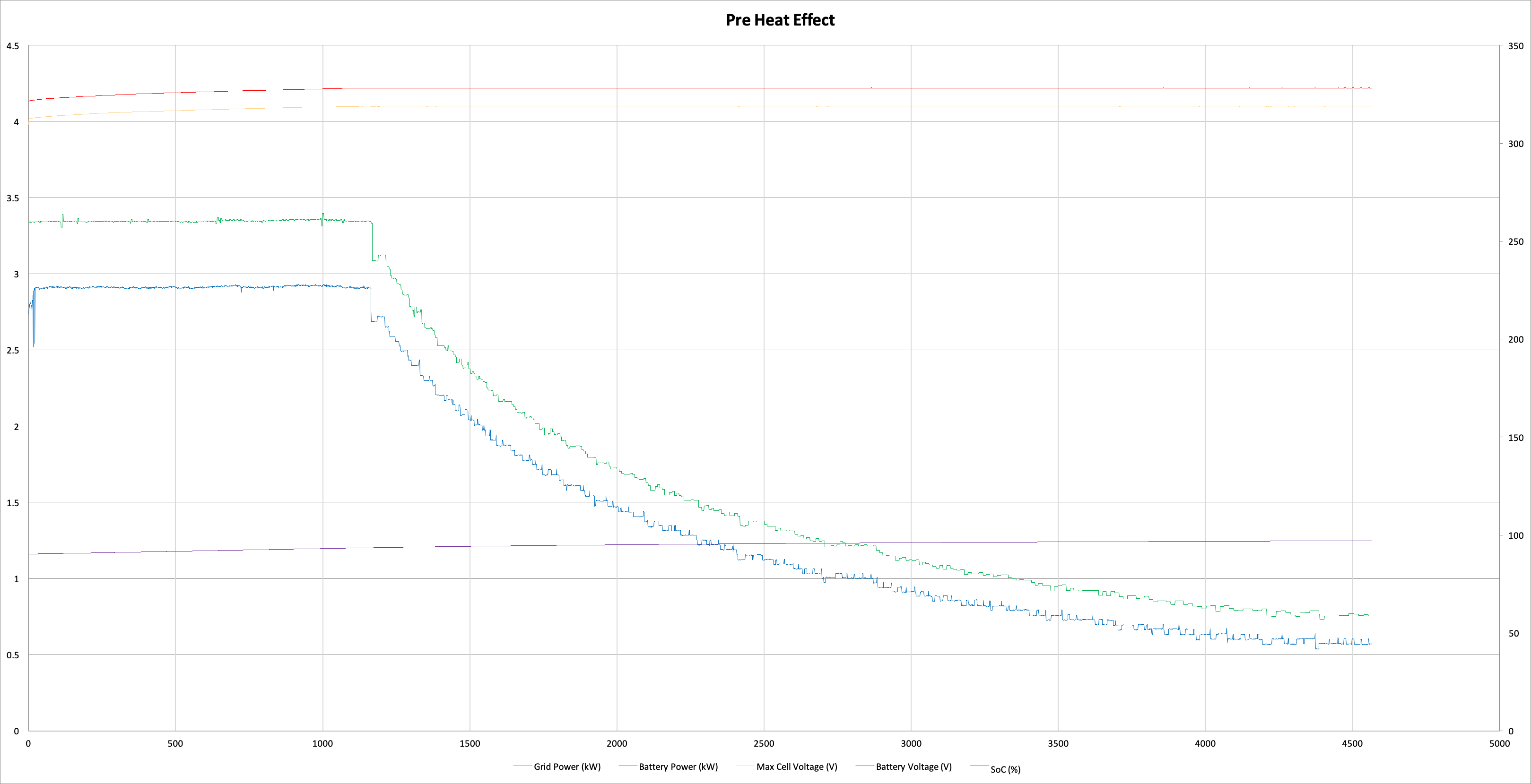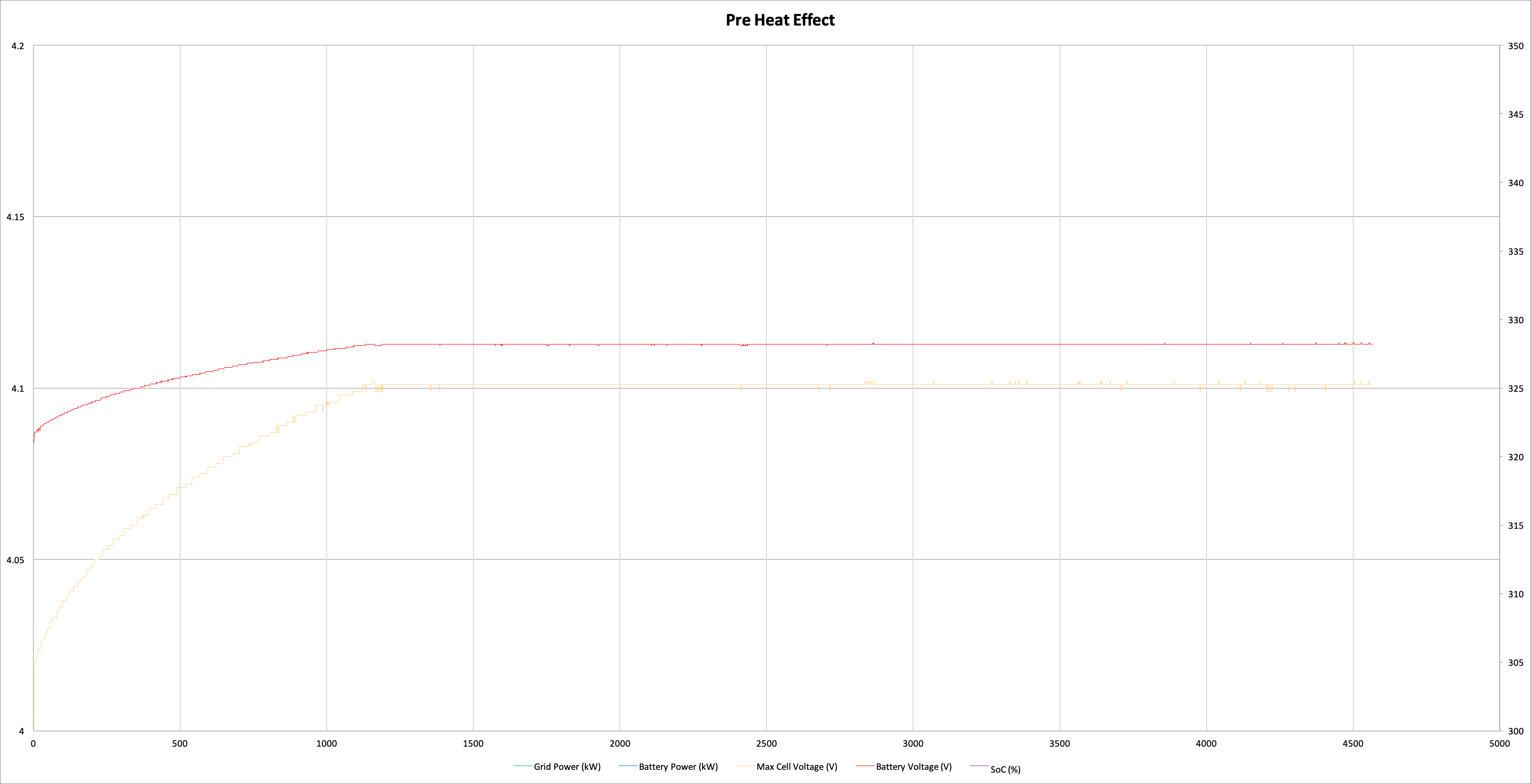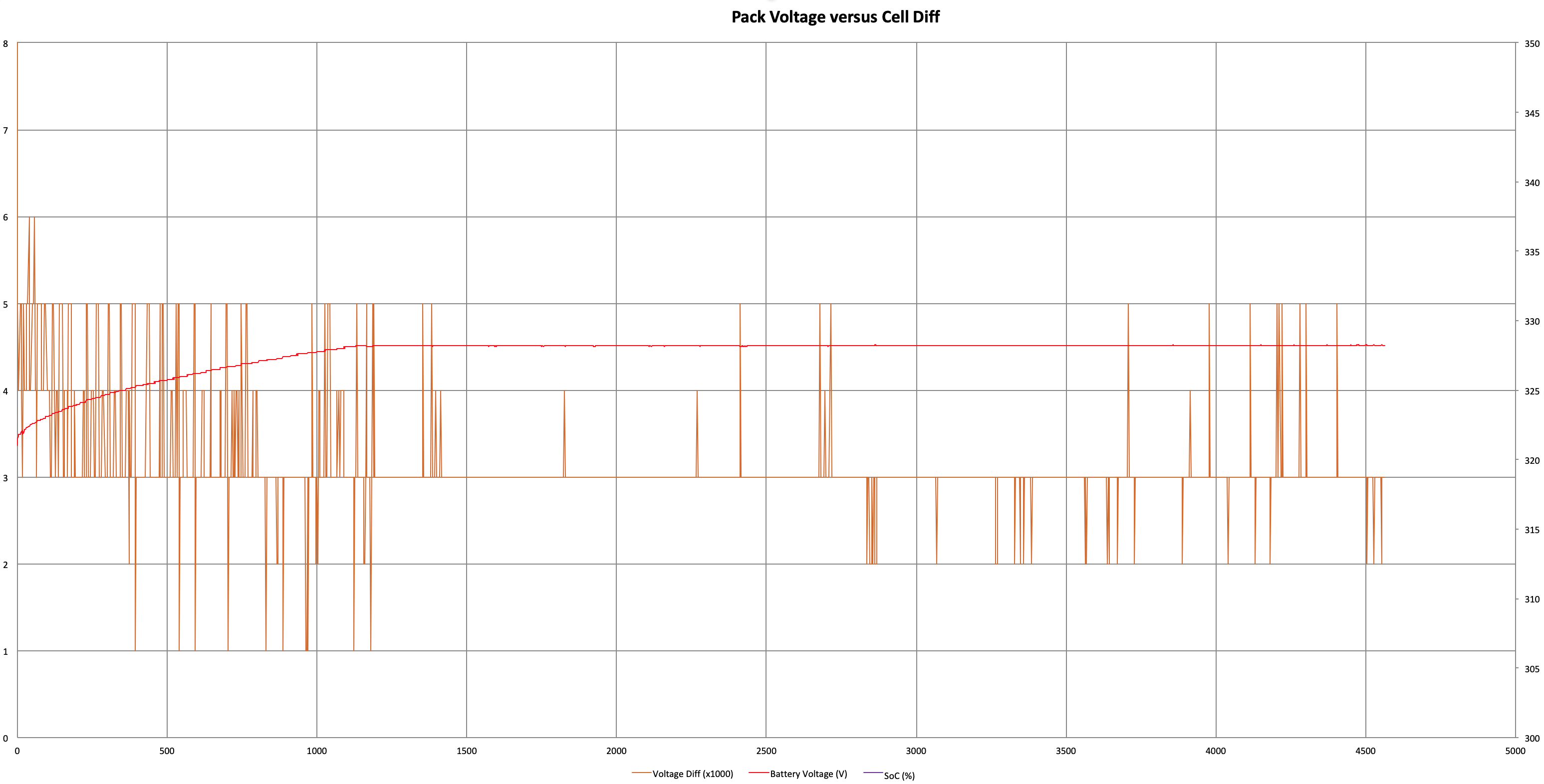How about these SoC jumps during the cell balancing phase of AC charges?
We know SoC can be adjust up or down during cel balancing. I just saw a jump from 80,0% to 85+%. But what does it mean? I can think of two things:
A) The BMU thought that, with the amount of energy added, SoC had rissen to 80%, but it turns out SoC has rissen to 85%. Same amount of energy adds 5% extra SoC, so capacity must be less than the BMU thought it was.
B) The BMU thought that, with the amount of energy added, SoC had rissen to 80%, but it turns out SoC has rissen to 85%. So, SoC at the beginning of the Charge cycle must have been higher than the BMU thought it was, so capacity must be more than the BMU thought it was.
C) ....
Any thought?
Also, usually we see the grid side power draw go to approx. 100 watts during the cell balancing phase(s). On the battery side, power is 0. Apparently, the 100 watts are consumed by the process itself. Every now and then I see power flowing out of the battery for a very very short time. Think of 53 - 55 watts. Just a little spike (unfortunately most likely to short for the Dog to pick it up). Just now, I saw a power draw of about 100 watts for several 10s of seconds. Never seen that before. What could that mean?
Final one for now. The tapering off at the end of the cycle seems not at a fixed moment in time. Right now, my SoC is at 90.8% and power fed into the battery (DC side) is still 2900 watts. Yesterday I saw it taper of as early as 80%. Must say, I believe it skipped the balancing at 80% and did one at 97% or 98% instead.
- edit -
The charge has finished at 104,98% (27.6 Ah out of 26.3 Ah). Just 2 hours later I initiated a top-up charge so my adapter would wake up and I could check soc again. Went down to less than 98%. By the time the top-up finished it was still less that 99%.




